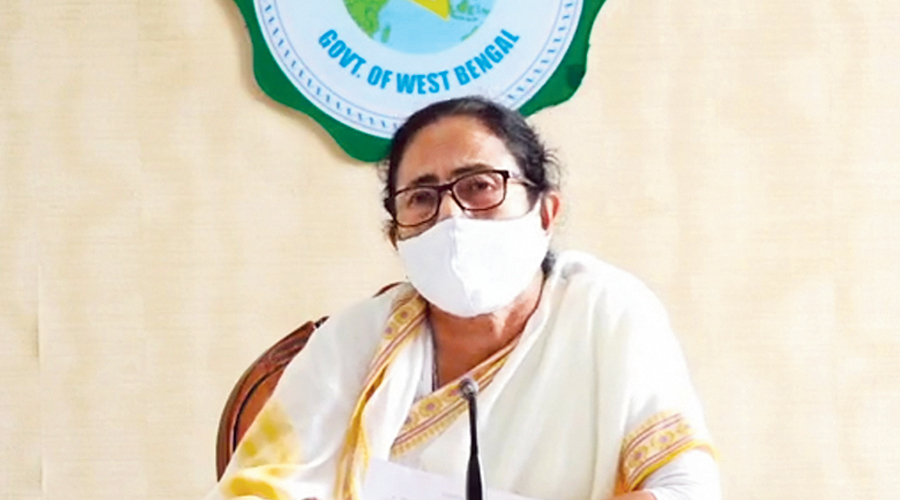
Cyclone Yaas-ravaged districts mull grass shield
Mamata Banerjee advised the district magistrates and irrigation officials to coordinate with the Nadia administration and check the feasibility of planting vetiver grass

During a post-Cyclone Yaas review meeting at Nabanna on Wednesday, chief minister Mamata Banerjee formed a committee involving the irrigation, finance, forest, home, disaster management and environment departments, and advised irrigation officials to coordinate with the Nadia district administration, which a few years ago had implemented a vetiver plantation project to prevent the erosion of a river embankment.
She also advised the committee to talk to experts in the field and repeated her advice to the two 24-Parganas district administrations in her meetings with officials in Hingalganj and Sagar on Friday.
Earlier on Tuesday and Wednesday, at least 134km of earthen embankments were damaged across North and South 24-Parganas under the impact of Cyclone Yaas, in addition to some in coastal areas in East Midnapore when a high tide rushed in around the time of the cyclone’s landfall on Wednesday. The ensuing flooding caused by breaches of the embankments was so devastating that nearly 15 lakh people had to be evacuated from these areas.
Angry over such damage and apparent lack of preparedness, the chief minister during the review meeting at Nabanna advised the irrigation officials to be more “careful” and to find a solution.
“If every year such a cyclone occurs and all protective work completed by us is washed away due to high tide, you must look for an alternative solution like planting mangrove trees or vetiver grass,” Mamata told irrigation officials during the meeting.
“We have scarcity of funds. So it is not possible to make concrete all embankments. We should look for alternative solutions at least for those earthen embankments which cannot be made concrete for lack of funds,” she added.
She also advised the district magistrates and irrigation officials to coordinate with the Nadia administration and check the feasibility of planting vetiver grass.
“I know about a project on vetiver grass plantation implemented by Nadia to prevent erosion of river embankments. They got results. You can check its feasibility”, she said, advising the DMs to talk to P.B. Salim, the managing director of WBPDCL, who served Nadia as the district magistrate during the implementation of those projects.
During March 2015, the Nadia administration had taken up a Rs 33 crore vetiver plantation drive. The grass was planted along the Jalangi, Bhagirathi and Hooghly river embankments. The Nadia administration had contacted P. Vincent, known as the pioneer of vetiver plantation in India, for inputs.
Vetiver grass (Vetiveria zizanioides), which survives for about 35 years, is commonly known as khus ghas and has a finely structured mat-like root system that grows about 3-4m downward and works well as a soil binder to control erosion of soil along river embankments.
“November to February is the ideal time for its plantation. It takes three months to grow strong and within nine months its routes expand a strong network going deep into the earth and binds it”.
A teacher of Bidhan Chandra Krishi Visvavidyalaya agreed that vetiver was one of the best soil binders. However, considering the high tide in rivers along the coastal Sunderbans, which causes water to rise up to 6 feet or more during cyclones, it is uncertain how effective vetiver would be in saving embankments or controlling floods, he said.


0 Response to " Cyclone Yaas-ravaged districts mull grass shield"
Post a Comment
Disclaimer Note:
The views expressed in the articles published here are solely those of the author and do not necessarily reflect the official policy, position, or perspective of Kalimpong News or KalimNews. Kalimpong News and KalimNews disclaim all liability for the published or posted articles, news, and information and assume no responsibility for the accuracy or validity of the content.
Kalimpong News is a non-profit online news platform managed by KalimNews and operated under the Kalimpong Press Club.
Comment Policy:
We encourage respectful and constructive discussions. Please ensure decency while commenting and register with your email ID to participate.
Note: only a member of this blog may post a comment.